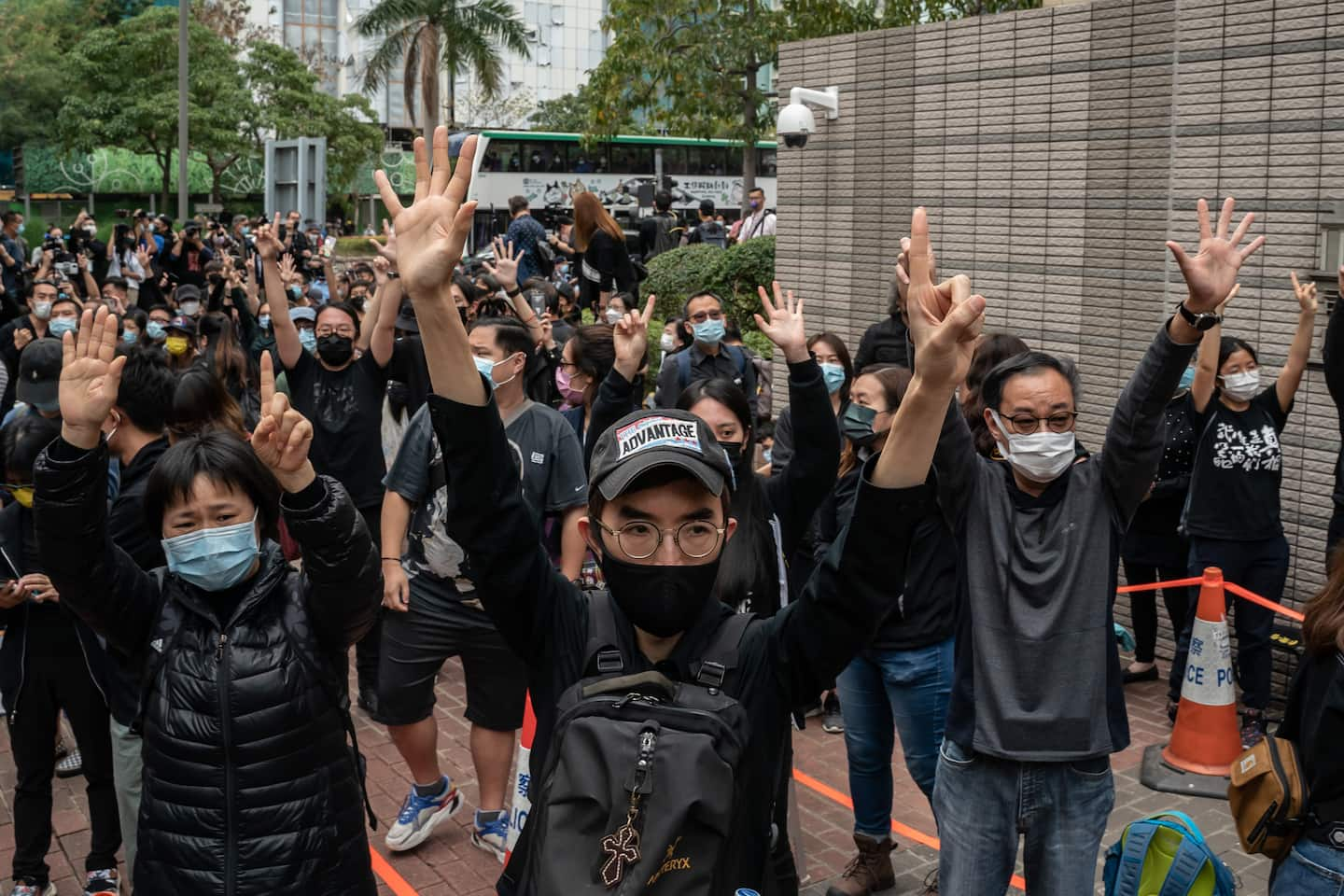China’s Two Sessions: What to watch on Hong Kong, child policy and tech competition

Still, the “Two Sessions,” as the gatherings that begin Thursday are known, offer a valuable glimpse into what the leadership in Beijing sees, and hopes to communicate, as its priorities. This year, issues such as the country’s next five-year economic blueprint and contentious population and retirement policies are expected to dominate. Protracted tensions with the United States and the West could hang over proceedings, according to analysts and state media, who suggest that Chinese leaders could use the conferences to accelerate their push for technological self-sufficiency and tighten their grip on Hong Kong.
Complete control of Hong Kong
Hong Kong authorities have escalated a campaign of arrests and purges against pro-democracy activists after the Beijing government, which exercises overarching control over Hong Kong but is theoretically obligated to allow it political autonomy, passed a national security law at last year’s “Two Sessions” to squash dissent.
The next step could be more extensive rewriting of the rules. There are reports that Beijing plans to introduce potentially far-reaching revisions to Hong Kong’s Basic Law, the mini-constitution that includes the “one country, two systems” principle, or wholesale changes to Hong Kong elections. This week, Chinese state media reported that Beijing policymakers are mulling redrawing Hong Kong’s electoral districts and requiring candidates to be nominated by an electoral college comprising pro-Beijing political and business elites.
Two-child policy? Or three?
After 35 years, China lifted its contentious one-child policy in 2016, but it may not be enough to prevent a slow-motion demographic crisis. China’s civil affairs minister Li Jiheng published an op-ed in December warning China’s birth and fertility rates had fallen below a “warning line,” prompting a firestorm of discussion over whether new legislation should be introduced to scrap all birth control policies.
While Chinese families face soaring costs of living, child care and education similar to many developed countries, the legacy of the one-child policy has compounded China’s demographic squeeze. People over 65 accounted for 8 percent of China’s population in 2000 but will reach about 20 percent in 2025. In 2050, about 40 percent of Chinese will be over retirement age. The working-age population, those between 16 and 59, could drop by 35 million the next five years alone, a national social security official told reporters in Beijing last month as he floated the idea of raising the legal retirement age of 60, setting up a key issue for the “Two Sessions.”
Fighting the U.S. tech crunch
Former president Donald Trump may be out of power, but Chinese leaders are convinced that relations with the United States have changed permanently, and that the Trump administration’s export sanctions that crippled Huawei taught them a lesson in technological dependency. Beijing could face sustained pressure as President Biden takes a hard line against Chinese technology firms and recruits U.S. allies to help compete against China.
In recent months Chinese President Xi Jinping and others have acknowledged the “complicated international situation” facing China, which has shaped how they have drawn up the new Five-Year Plan, the overarching development blueprint to be released at this year’s “Two Sessions.”
Officials have already signaled the key points: China needs to become self-reliant and develop homegrown industries that can compete with the West in computer chips, biotechnology, renewable energy vehicles and power and other strategic fields of the future. The economy needs to move away from exporting low-cost, manufactured goods and remain robust even if China is geopolitically encircled by U.S. allies or faces a global downturn.
Growing the economy
China may have bounced back from the coronavirus pandemic before other major economies, but it could be tricky to sustain long-term growth, particularly the green, sustainable kind Beijing wants. Chinese economists have warned for years that the country is weighed down by rising government, corporate and household debt, but that hasn’t stopped the government from launching new infrastructure spending plans to kick-start post-pandemic recovery, or housing speculators continuing to buy into what regulators have warned could be the world’s biggest asset bubble.
Top leaders including Xi have stressed they want China to win the race for green technologies and cut down on dirty, traditional sources of growth, but that could hit employment and encounter resistance from powerful coal and steel industries. After leaders paused an annual “Two Sessions” ritual last year — forecasting the year’s gross domestic product growth — they’ve signaled they could permanently scrap the practice so local officials don’t resort to debt-fueled construction binges or dirty manufacturing to meet their targets.






